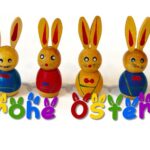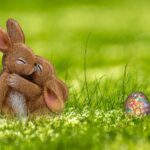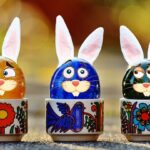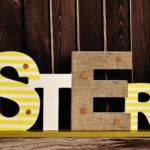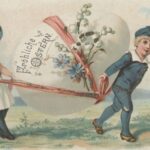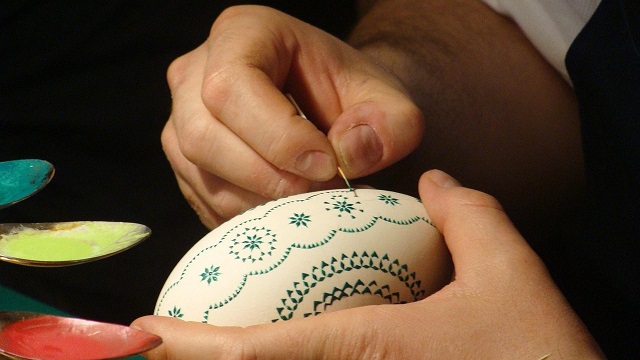
Decorating Easter eggs is one of Germany’s most cherished traditions, blending history, art, and symbolism. Unlike simple dyeing methods used in many parts of the world, Germany is home to some of the most intricate and artistic egg-decorating techniques.
The most famous of these comes from the Sorbs, a Slavic minority in Saxony and Brandenburg, known for their detailed hand-painted eggs. These eggs feature precise, symmetrical patterns created with wax, dye layering, and etching. Beyond the Sorbs, regions throughout Germany have developed their own methods, ranging from folk art painting in Bavaria to natural dyeing techniques that date back centuries.
This article explores the history, significance, and unique techniques behind German Easter egg decorating—and how you can try these stunning designs yourself.
The History of Easter Egg Decorating in Germany
The tradition of decorating Easter eggs in Germany dates back to pre-Christian times, when eggs symbolized fertility and renewal. With the arrival of Christianity, the egg became a symbol of resurrection, and Easter egg decoration evolved into a beloved custom.
Pre-Christian Origins
Before Christianity spread across Europe, Germanic tribes saw eggs as powerful symbols of spring’s renewal. Many early pagan customs revolved around fertility, nature’s rebirth, and solar cycles.
- Red-painted eggs represented life and protection.
- Some communities buried eggs in fields to bless crops and ensure a good harvest.
- Others exchanged eggs as gifts, believing they brought prosperity.
These early traditions laid the foundation for Easter egg customs that would later blend with Christian beliefs.
Read more: The History of Easter in Germany: Pagan Roots to Christian Traditions
The Christian Influence on Easter Eggs
With the spread of Christianity, the egg took on a new religious meaning.
- The hard shell represented Christ’s tomb, while cracking it open symbolized resurrection.
- During Lent, eggs were forbidden due to fasting rules, so families would boil and decorate them for Easter Sunday.
- Eggs were exchanged as gifts among Christians, often bearing religious inscriptions or symbols.
By the Middle Ages, Easter egg decoration was widespread across Germany, with regional styles emerging over time.
The Sorbian Tradition: Germany’s Most Stunning Easter Eggs
The Sorbs, an ethnic group in eastern Germany, are famous for creating some of the world’s most intricate Easter eggs. Passed down through generations, their designs feature precise geometric patterns, nature-inspired motifs, and religious symbolism.
Four Traditional Sorbian Decorating Techniques
Wax-Resist (Batik) Method
This technique, similar to Ukrainian Pysanky, involves applying melted beeswax in intricate patterns before dyeing the egg.
- The wax protects certain areas from the dye, allowing for layered color effects.
- Artists repeat the process with different colors, removing the wax in the final stage to reveal multi-colored patterns.
Etching (Kratztechnik)
Eggs are first dyed in a deep color, then carefully scratched with a fine tool to create patterns. The contrast between the light natural shell and the darker dyed areas creates a striking effect.
Relief Painting (Bossiertechnik)
This three-dimensional method involves applying colored wax in layers, creating a raised, textured design on the egg’s surface.
Wax Dripping (Spritztechnik)
Instead of using a fine tool, melted wax is splattered or dripped onto the egg, forming an abstract pattern before dyeing.
Read more: German Easter Markets: Where to Find the Best Easter Celebrations
Other Easter Egg Decorating Traditions in Germany
Hand-Painted Folk Art Eggs
Across Germany, especially in Bavaria and Swabia, eggs are often hand-painted with bright floral designs, pastoral scenes, and regional motifs.
- Bavarian eggs often feature edelweiss flowers, traditional Alpine patterns, and symbols of good fortune.
- Swabian designs emphasize geometric patterns and animal motifs.
- In Thuringia, some eggs are embellished with gold leaf and delicate lace-like patterns.
Natural Dyeing with Plants & Herbs
Before commercial dyes, Germans used natural ingredients to create rich, earthy colors.
- Onion skins → Deep reddish-brown
- Beetroot → Soft pink
- Spinach → Light green
- Turmeric → Golden yellow
Osterbrunnen – Easter Fountains
In Bavaria and Franconia, public fountains are decorated with thousands of hand-painted eggs, garlands, and flowers, forming vibrant Easter displays.
Read more: Osterbrunnen – The Stunning Easter Fountains of Bavaria and Franconia
Where to See Traditional Easter Egg Art in Germany
1. Sorbian Easter Egg Markets
These markets are the best places to see master artisans at work. Highlights include:
- Bautzen Easter Market (Bautzener Ostermarkt)
- Spreewald Easter Egg Exhibition (Schloss Lübbenau)
- Hoyerswerda Sorbian Cultural Center
2. German Easter Markets
Cities such as Nuremberg, Dresden, and Munich hold Easter markets featuring decorated eggs, seasonal crafts, and festive foods.
Read more: German Easter Foods: What’s on the Table During Ostern?
How to Try German Easter Egg Decorating at Home
If you want to bring a touch of German Easter tradition into your home, here are some methods to try:
- Wax-resist method: Use a fine wax pen and dye eggs in layers.
- Etching technique: Dye the eggs first, then scratch off intricate patterns.
- Natural dyeing: Boil eggs with onion skins, turmeric, or beets for natural hues.
- Hand painting: Use fine brushes and acrylic paints to create floral or folk designs.
Many Sorbian-style decorating kits are available online, including wax pens, dyes, and traditional pattern templates.
Easter egg decorating in Germany is more than just a seasonal activity—it is an art form passed down through generations. Whether you admire the exquisite Sorbian designs, enjoy the simplicity of natural dyes, or love the folk-art eggs of Bavaria, this tradition adds color and meaning to the Easter season.
Want to Learn More About German Easter?

